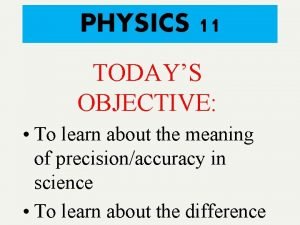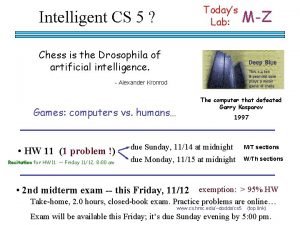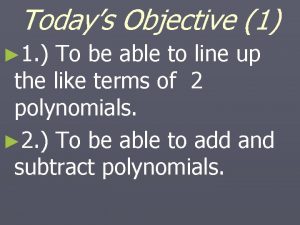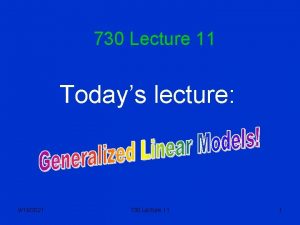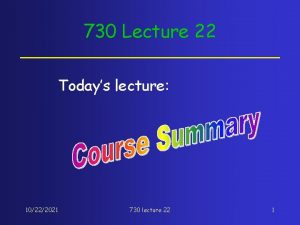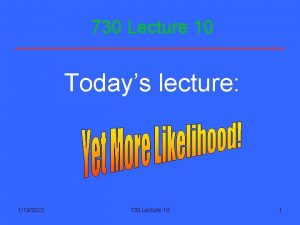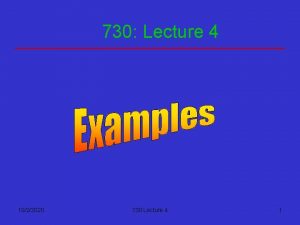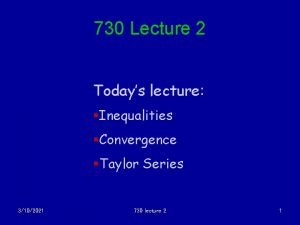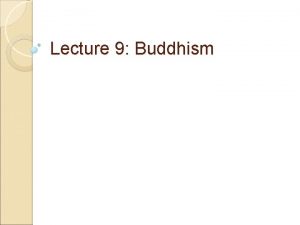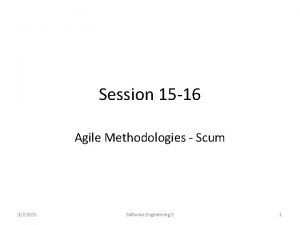730 Lecture 20 Todays lecture 322021 730 lecture






















- Slides: 22

730 Lecture 20 Today’s lecture: 3/2/2021 730 lecture 20 1

Sampling distributions Population distribution F Sampling distribution Fs 3/2/2021 730 lecture 20 2

The basic idea (iid case) “F” + “S” = “Fs” Population distribution + statistic equals sampling distribution 3/2/2021 730 lecture 20 3

Examples 3/2/2021 730 lecture 20 4

Sampling distributions: the alternatives • Derived from theory (if we can), or… • Can use simulation! Eg – – – 3/2/2021 Simulate X 1, …, Xn from Expo(q) Compute s 1=sample mean Repeat N=10, 000 times Get sample s 1, …s. N from sampling distribution Display graphically, calculate std dev etc 730 lecture 20 5

R code n<-10; N<-10000; theta<-5 s<-numeric(N) for(i in 1: N){ # generate sample from population distribution x<-rgamma(n, 1)*theta # Calculate statistic s[i]<-mean(x) } sqrt(var(s)) [1] 1. 560461 (Correct value is 5/sqrt(10) = 1. 5811) 3/2/2021 730 lecture 20 6

R code- graphs par(mfrow=c(1, 2)) hist(s, breaks=50) alphas<-((1: N)-0. 5)/N gamma. quantiles<-theta*qgamma(alphas, n)/n plot(sort(s), gamma. quantiles, xlab="order statistics") abline(0, 1) 3/2/2021 730 lecture 20 7

Graphs 3/2/2021 730 lecture 20 8

The big problem…. • • 3/2/2021 In practice we don’t know F! What can we do? Estimate F! How? 730 lecture 20 9

Estimating F Two methods – Non-parametric: use Empirical distribution function – Parametric: assume form of F is known but F depends on unknown parameters. 3/2/2021 730 lecture 20 10

Method 1: Non-parametric method § Estimate F by EDF Fn(x) § Fn (x)=proportion of sample that is £ x § Maxx|Fn (x) -F(x)| ® 0 in prob § Ön(Fn (x) -F(x) ) ® N(0, F(x)(1 -F(x) ) 3/2/2021 730 lecture 20 11

Empirical distribution function (cont) EDF jumps up 1/n at each data value: eg for n=3 1/3 1/3 x 1 3/2/2021 x 2 730 lecture 20 x 3 12

EDF: example EDF of a N(0, 1) sample of 50 3/2/2021 730 lecture 20 13

Sampling from the EDF • The EDF of a sample x 1, …, xn is the df of a discrete distribution that has probability mass 1/n at each data point of the sample. • Thus, to draw a sample of size N from this distribution we draw a random sample of size N with replacement from x 1, …, xn 3/2/2021 730 lecture 20 14

Method 2: the parametric method • If we assume that the df of the population is F(x, q) where F is known but q is not, estimate F by is an estimate of q. 3/2/2021 730 lecture 20 15

The bootstrap To estimate the standard error of a statistic S: – Estimate the population df. – Draw a random sample of size n from the estimated F and calculate S from the sample. – Repeat N times, get s 1, …, s. N – Calculate the std dev of the N values s 1, …, s. N 3/2/2021 730 lecture 20 16

The bootstrap (cont) 3/2/2021 730 lecture 20 17

Example • Suppose we want to estimate the standard error of the sample variance. The population distribution is exponential and n=10. 3/2/2021 730 lecture 20 18

R code n<-10; N<-1000; theta<-5 # theta is the true value # generate a sample x<-rgamma(n, 1)*theta # now do non-parametric bootstrap (use EDF) s<-numeric(N) for(i in 1: N){ bootstrap. sample<-sample(x, n, replace=T) s[i]<-var(bootstrap. sample) } sqrt(var(s)) [1] 22. 19461 3/2/2021 730 lecture 20 19

R code (cont) # now do parametric bootstrap # (use exponential with estimated mean) xbar<-mean(x) s<-numeric(N) for(i in 1: N){ bootstrap. sample<-rgamma(n, 1)*xbar s[i]<-var(bootstrap. sample) } sqrt(var(s)) [1] 35. 26925 3/2/2021 730 lecture 20 20

Theory Using tedious algebra, one can show that For the exponential, m 4=9 q 4, m 2=q 2. Thus 3/2/2021 730 lecture 20 21

Results • For q=5, n=10, the exact variance is 25 xsqrt(74/90) = 22. 66912 • The nonparametric bootstrap did very well (22. 19461) • The parametric bootstrap was not very good (35. 26925) • Any ideas why? 3/2/2021 730 lecture 20 22
 322021
322021 Permaglass me 730
Permaglass me 730 390 en yakın onluğa yuvarlama
390 en yakın onluğa yuvarlama Ars 28-730
Ars 28-730 Ieee 730
Ieee 730 730-170
730-170 Trimble sps 930
Trimble sps 930 Todays objective
Todays objective Todays lab
Todays lab Walsall rugby club
Walsall rugby club Todays price of asda shares
Todays price of asda shares Todays jeopardy
Todays jeopardy Handcuff nomenclature
Handcuff nomenclature Todays worldld
Todays worldld Date frui
Date frui Today's objective
Today's objective Todays plan
Todays plan Todays concept
Todays concept Todays science
Todays science Olongman
Olongman Chapter 13 marketing in today's world worksheet answers
Chapter 13 marketing in today's world worksheet answers Todays objective
Todays objective Generations
Generations







